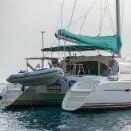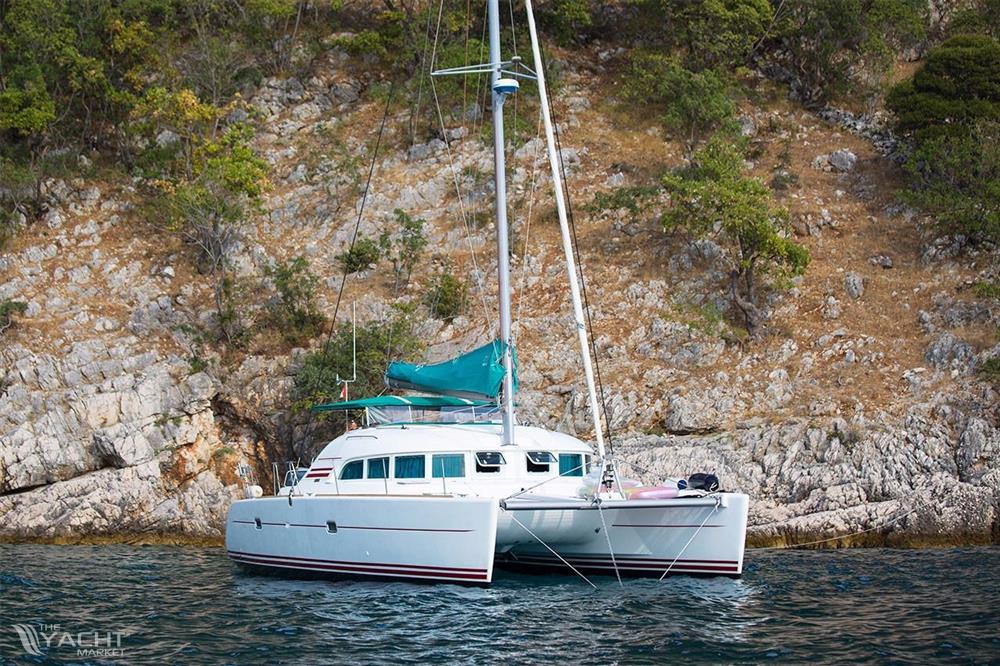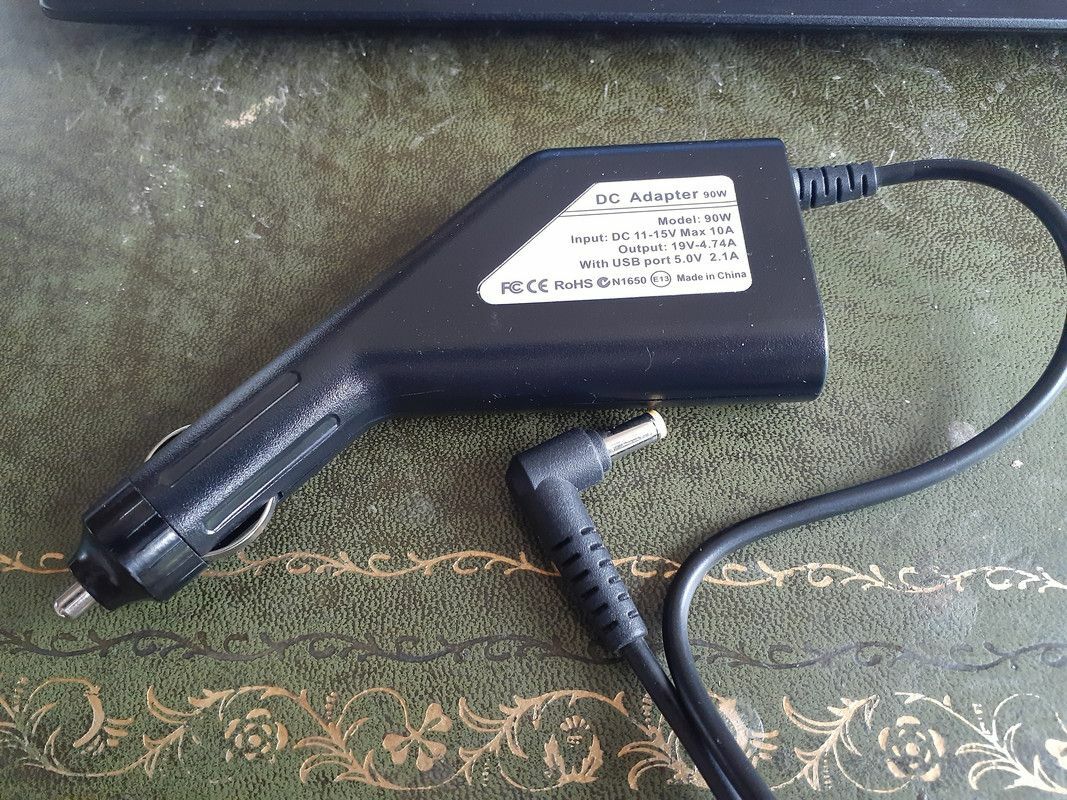-
Posts
45,888 -
Joined
-
Last visited
-
Days Won
130
Content Type
Profiles
Forums
Events
Gallery
Blogs
Store
Everything posted by Alan de Enfield
-

considering moving into a boat but need advice
Alan de Enfield replied to Ana Bright's topic in New to Boating?
This is a copy of the cut and paste (from the advert) I put in post No ?? on page 1 of the thread. Does this clarify the situation ? The sale includes the full freehold ownership of the mooring. -
AND VAT to be added. It is the same when buying boats from anywhere else in the world. I was looking to bring boats in from the USA when we had £1 =$2 and the boats were about 50% of the UK price for the same boat. Add duty, VAT on the purchase price, delivery costs, VAT on the delivery cost, and a PCA and the boats were pretty much up to the same as the 'normal' UK price and I could see why they were the price they are in the UK
-

Compost toilets: separating fact from fiction (workshop)
Alan de Enfield replied to Kate_MM's topic in General Boating
Not quite sure how anyone would / could make an 18 litre cassette last 2 weeks, let alone a month ............................ We deliver a collection caddy (18l) and paper liner to your boat. Every two weeks, or month, depending on your subscription choice, we collect your full collection caddy and swap it for an empty one. So simple and easy! -

considering moving into a boat but need advice
Alan de Enfield replied to Ana Bright's topic in New to Boating?
As I said in post No ???- the advert details say the land is freehold & comes with the boat, (the details also say that the recent survey is available for viewing). SURVEY A copy of the survey for the boat are available from the selling agents. -

Why are CRT licensing and mooring separate from each other?
Alan de Enfield replied to tats's topic in General Boating
There are 4 conditions to be granted a licence - You also need to make payment and show you have a home mooring (or make a declaration that you don't have one) 😈 But the Act also details in what circumstances you do not need a BSS or licence and under what conditions the licence can be cancelled. -

Why are CRT licensing and mooring separate from each other?
Alan de Enfield replied to tats's topic in General Boating
If you didn't read the contract terms and conditions before commencing the two contracts then it is all your own fault. Had you read the contract T&Cs you'd have been fully aware of the period of notice and could have refused the contract at that time and found a mooring elsewhere, or, taken your boat off C&RT waters completely and not had to pay a licence fee at all. -

Cigarette Lighter Lead Powering Laptop 12v to 19v
Alan de Enfield replied to JoeC's topic in Boat Equipment
I use one all the time (on the boat) it was about £10 on ebay. Use it with my Acer LapTop. (19v) This one but loads to choose from on ebay. -

£8.5m Fish Pass built on the River Trent.
Alan de Enfield replied to Alan de Enfield's topic in General Boating
They jump up the weir, & then they follow the River Trent instead of the Newark Cut / canal. -

£8.5m Fish Pass built on the River Trent.
Alan de Enfield replied to Alan de Enfield's topic in General Boating
It is absolutely nothing to do with C&RT, C&RT are only responsible for the navigation of the River. -

£8.5m Fish Pass built on the River Trent.
Alan de Enfield replied to Alan de Enfield's topic in General Boating
I was discussing this with my Father who worked for the Trent River Authority in the 50's, as the "River Inspector" and subsequently "Recreation Officer" responsible for developing boating and fishing on the Authorities waters - he made a couple of interesting observations : Thank you. There is already a fish pass at Holme Sluices I was there when it was opened by Prince Phillip. 1955 ish The coat rack that was in the back kitchen at our old house I purchased for him to hang his coat on when he toured the (TRA) laboratory at Meadow Lane on the same occasion . I pressed for the salmon pass which was opposed by the Authority because the close season for salmon overlapped that for coarse fish and it would would make control very difficult . The one I got was a compromise but it worked Few salmon passed through. The biggest problem was pollution from Scunthorpe Steel Works whose effluent formed a barrier ( via The Bottesford Beck). which joins the R. Trent at Keadby and contained very high levels of phenol. Nothing is new anymore -
C&RT announced that there were 743,000,000 visits to the canal in 2020/21
-
It is interesting that C&RTs "Visitors to the waterways satisfaction" survey shows an annual reduction in visitor satisfaction levels. 2018/19 = 92% 2019/20 = 87% 2020/21 = 84% Source : C&RTs annual published accounts.
-
Why would you expect to - you bought the boat "years ago".
-
If they fit, or if you can modify the axle to suit the "Aldi" (other brands available) puncture proof wheelbarrow wheels are the 'Mutz Nuts'. never have a puncture again. Screwfix equivalent. Walsall Universal Puncture-Proof Wheelbarrow Wheel 350mm | Wheelbarrows | Screwfix.com The Aldi one is more like a pneumatic tyre (dense foam) and doesn't rattle and bounce like a solid wheel.
-
Pictures show the vast scale of an £8.5m 'fish elevator' project to allow them to swim freely up the River Trent. An update from Trent Gateway Partnership confirmed that sheet piling works have been completed, with excavation work now taking place. Holme Sluices is a huge flood management structure that spans the full width of the River Trent - the third-longest river in the country - and runs to the south of Nottingham. It was built in the 1950s as part of a large-scale flood defence scheme and protects the city from flooding. Vast scale of progress on 'fish pass' to help salmon swim up the River Trent - Nottinghamshire Live (nottinghampost.com)
-
In a private sale (even buying thru' a broker is a private sale) the seller is not required to divulge anything about the boat and has absolutely no legal responsibility for it after purchase. You have no hope of recovering any money from the seller post purchase. Caveat Emptor reigns supreme in the boating world.
-
Basically the RCR is a 'cut and paste' of the EU RCD, it is gradually being amended to use the term GB (as NI is not covered by the RCR, continuing to be required to meet the RCD EU regulations) As you can see below the RCR is being amended by Product Safety and Metrology, and it is from there I am using the various quotations in this thread. The Recreational Craft Regulations 2017, as amended by the Product Safety and Metrology etc. (Amendment etc.) (EU Exit) Regulations 2019 (referred to in this document as “The 2017 Regulations”). The 2017 Regulations set out the requirements that must be met before products can be placed on the GB market. The purpose of the legislation is to ensure safe products are placed on the GB market by requiring manufacturers to show how their products meet the ‘essential requirements’. The Recreational Craft Regulations 2017 implement Directive 2013/53/EU on recreational craft and personal watercraft. The EU Withdrawal Act 2018 preserves the 2017 Regulations and enables them to be amended so as to continue to function effectively now the UK has left the EU. Accordingly, Product Safety and Metrology etc. (Amendment etc.) (EU Exit) Regulations 20192 fix any deficiencies that arose from the UK leaving the EU (such as references to EU institutions) and make specific provision for the GB market. There is therefore one set of UK 2017 Regulations, but some of the provisions apply differently in NI for as long as the Northern Ireland Protocol is in force. References to the 2017 Regulations in this guidance are references to those Regulations as they apply in Great Britain. Hope that helps !
-

considering moving into a boat but need advice
Alan de Enfield replied to Ana Bright's topic in New to Boating?
General concensus appears to be it is this one : The barge has full residential status and is connected to mains services whilst moored, with all necessary surveys and safety tickets. The sale includes the full freehold ownership of the mooring. This is an extremely rare opportunity as very few barges of this quality exist in the country and it would make an ideal home or investment property being close to the City of York. -
No, it was amended some years ago and now applies for the life of the boat, with the builder being responsible if the "build quality" causes any accidents / deaths etc the builder (which can be the DIY fitter-outer) is legally responsible and in the worse case could end up in court for manslaughter. No. it is specified in detail in the RCR defintions. I have provided the links so many times in the past - do some research your self.
-
You do realise that is just "another unamed source". Whatever info is provided all we'll get is "we want names!" and written evidence from them that they will not sell a boat without an RCR. I would not say "do not buy a boat without an RCR" I would simply point out the legal requirement for the 'correct paperwork'. I think there is enough evidence here that a buyer should be aware of what they could be getting involved in, they can they make a choice to either walk away or buy the boat.





